An interview with Sam Winston
This week’s interview lecture with Sam Winston looks at the relationship between form and function and how we read, understand and engineer communication.
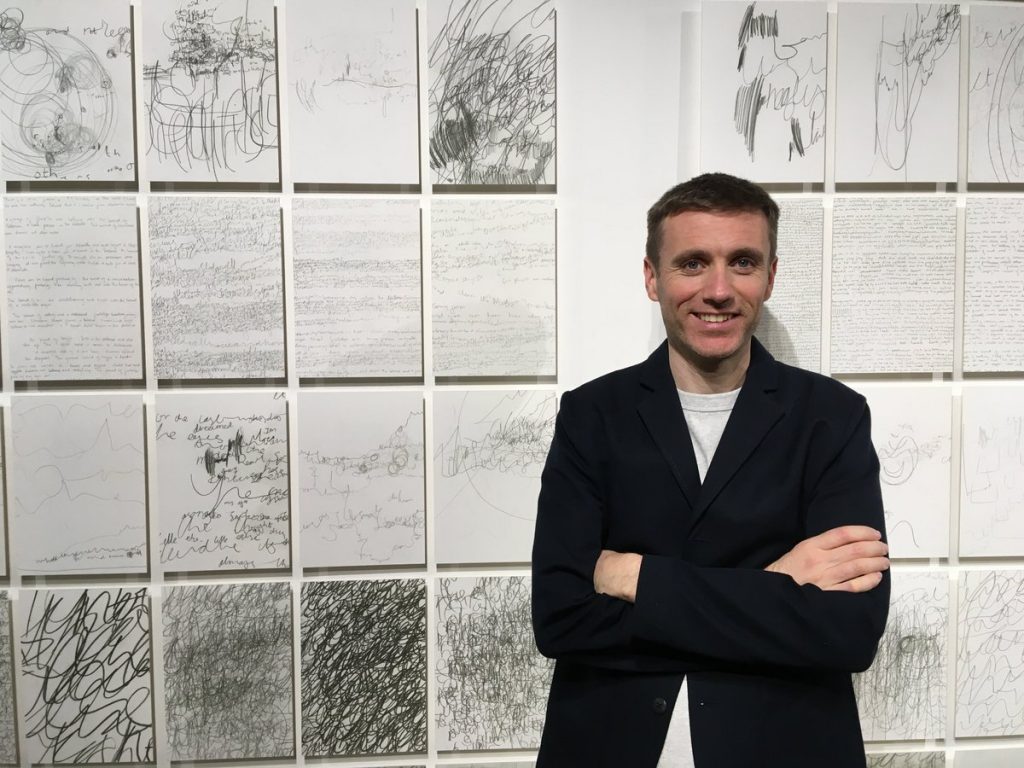
In this week’s lecture Sam Winston talk to us about how it’s important to play with medium to develop new and exciting ideas. He discusses how, by embracing the unknown, we make mistakes and learn from them. If we enter into a brief with a preconceived idea of the outcome it ‘collapses’ the possible outcomes.
If we start a project and think it’s going to be a poster, it’s likely to end up being a poster. Open this up and explore other possibilities and you may end up creating something beyond your wildest imagination. As Sam says:
Trust you will come up with something useful – use the fear as it is excitement. Sam Winston
A NEW Pattern for Working
Through Sam’s discussion he develops this idea of being receptive to possibilities and allow the time to explore a subject fully. Yes, a project can be done quickly with a predetermined outcome in mind. But, it isn’t likely to be interesting or original. Design can be an emotional experience as demonstrated below:
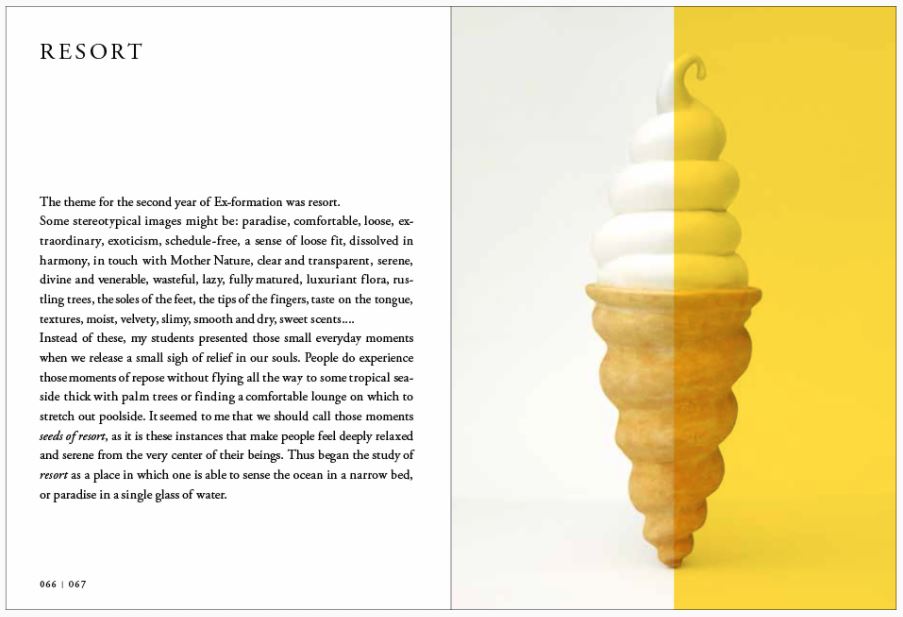
The above from Kenya Hara show how his students looked at a seaside resort and examined the feeling behind the experiences people have while on holiday. He calls this moments “seeds of a resort”, where “people feel deeply relaxed and serene from the very centre of their beings.”
PROCESS MATERIAL LANGUAGE DESIGN
Design, across a city or place, is intermingling constantly and isn’t concerned with an overall aesthetic. Its quite normal to see a hairdressers’ next to Portuguese café which is also next to an art gallery.
I think it’s also important to add to the above the ideas of texture, sound, and experience. I suppose these can all be categorised under ‘process’ but feel they need to be highlighted. I liked the idea Sam posed of going to a city blindfolded and seeing what you feel, hear and experience.
Material Relationships
The relationship between picture and text can include multiple messages. Sam uses the example of a piece of text which say, “the dog is looking for his ball.” If the image shows exactly that there is a missed opportunity to convey another message. A wasted opportunity. If the picture shows the dog confused and sad then it gives the piece a second meaning. A second voice.
It is even possible to induce further ‘voices’ or viewpoints by thinking outside the box in terms of what processes are used and what materials:
The institute of making has more than 28 pages of materials used in the making process and it is neglectful to your own practice to not consider, at least some of these, when approaching a new project :
https://www.instituteofmaking.org.uk/materials-library
A practice for everyday life highlights some use of unusual media to create unique and bold responses:
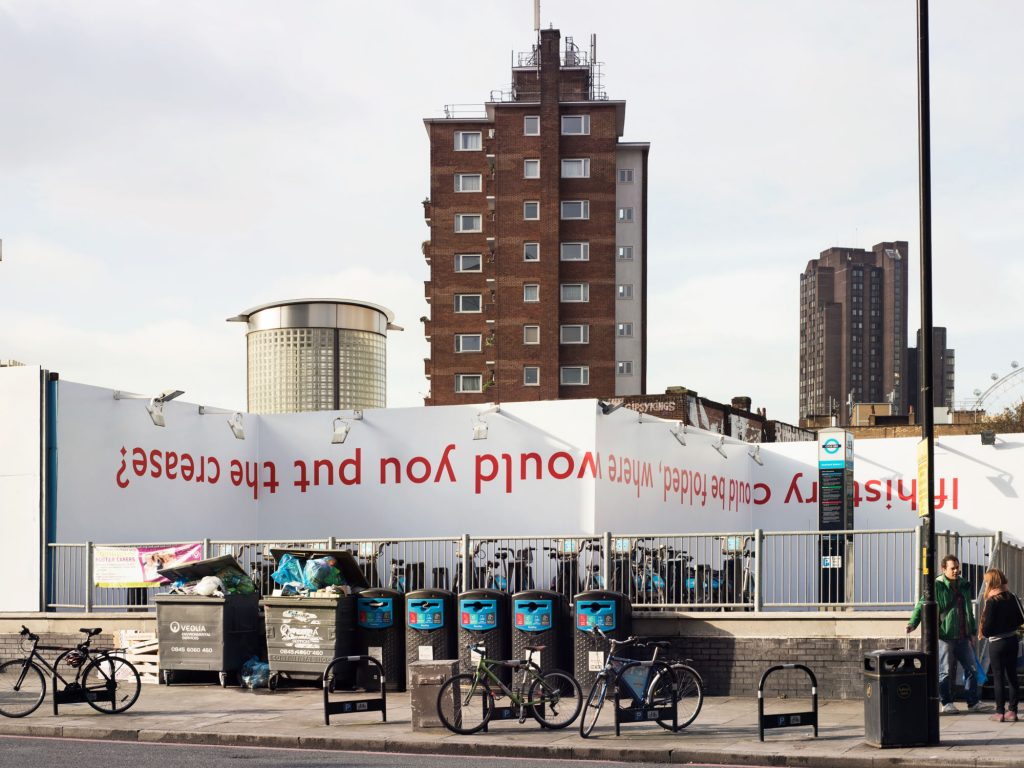

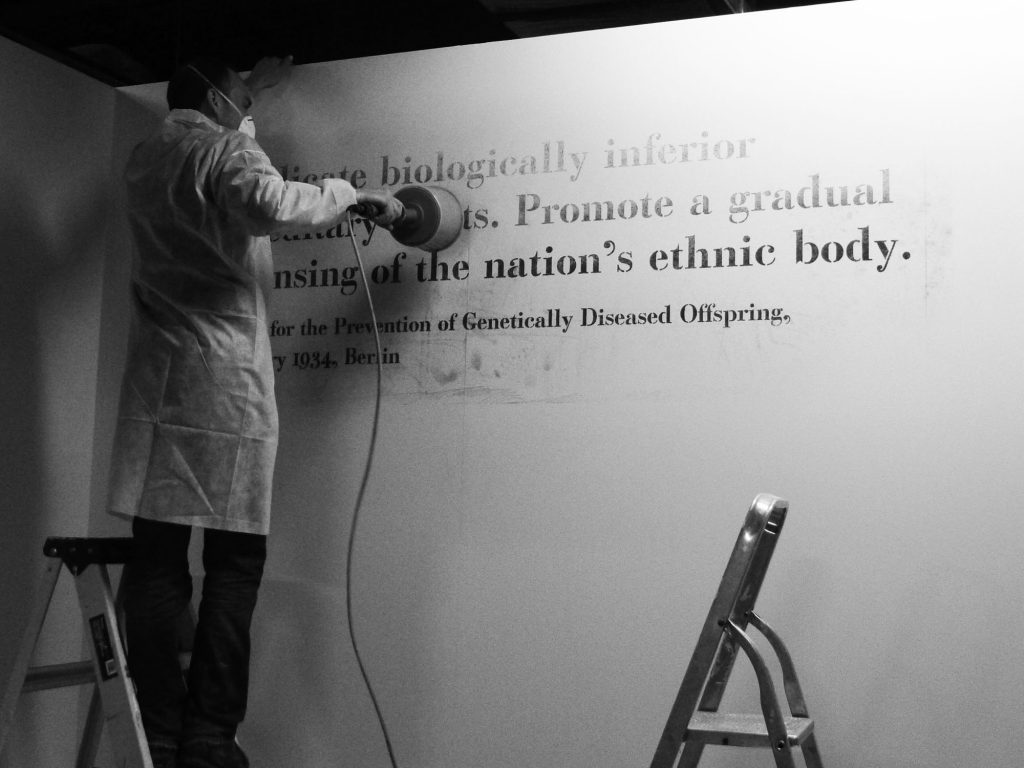
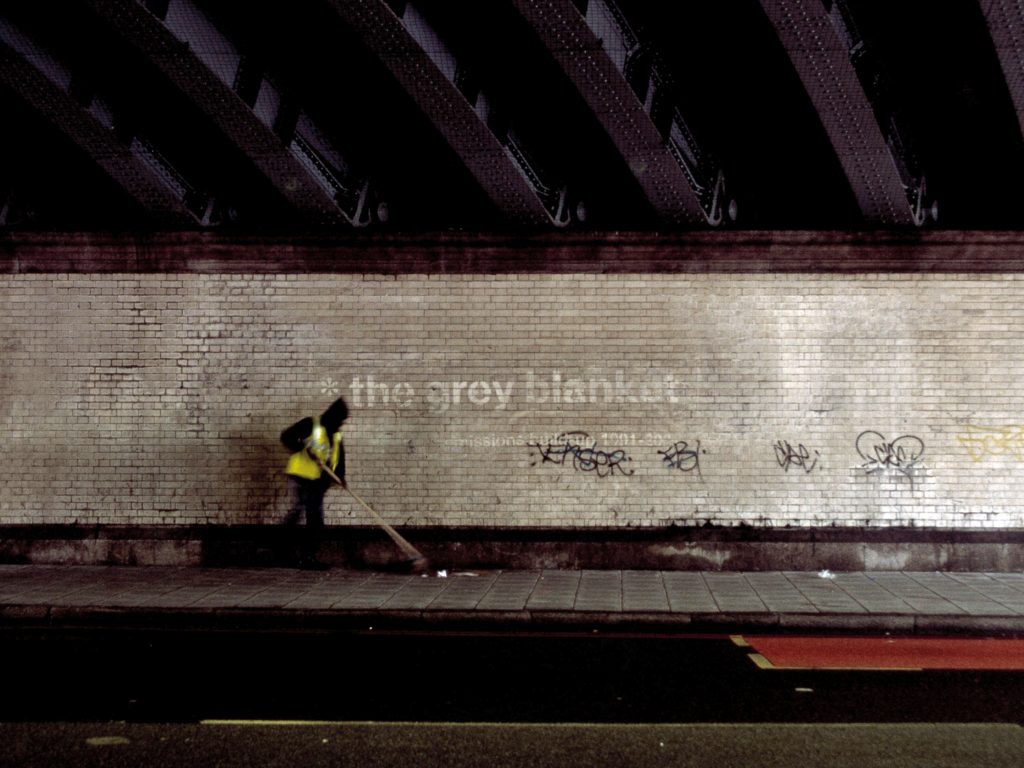
“We created four-metre-long typographic messages on the city streets, which were revealed by cleaning off areas of carbon emissions built up on surfaces around the city. They revealed buildings, walls, and tiles which have been hidden for years under the grey blanket of pollution. The project had an unexpected, positive impact – as the borough councils considered these interventions to be graffiti, they were obliged to remove each design, taking with it the pollutants we had aimed to draw attention to, and in some small way cleaning up the city.” A Practice for Everyday Life
Finally, Sam moved onto something he is working on at the moment – Blind drawings. He spends weeks drawing something without looking at it. In his mind he knows what he wants it to look like, what he expects it to look like. He plans to draw what is in his mind before revealing the blind drawing. I quite like the idea of never knowing what it looks like. In your mind it can be perfect, changeable and exacting. In reality that is rarely the case.
It really reminds me of Schrodinger’s cat – the thought experiment explained below:
So a piece of artwork or a poem which is yet to be seen is also in a super position. It is both amazing and crap all at once! Only by looking do we know which one it is. Sometimes it’s better to not know.
Ideas Wall
Workshop Challenge
Communicate an emotion you perceive your city or location is about.
Take the word and use an appropriate material, form or medium – 2D, digital, 3D or immersive.
You may choose to communicate the word directly or you may choose to create a juxtaposition, if there is a contradiction or tension, eg New York is Tense.
This week’ challenge has proved quite difficult. Not only are we in lockdown 2.0 my wife had also contracted Coronavirus. This meant that my whole family was plummeted into a more stringent isolation where we could not leave the house. For that reason, I thought I would focus this week’s efforts on my immediate vicinity and the emotions that have accompanied a stressful lockdown.
A Garden of Hope
The garden to my home is leafy with several trees under protection orders. The grass is no longer visible and covered with Autumn’s offspring as the leaves tumble from their cold freezing branches. As I move around the garden I can hear a crisp crunch underfoot. The birds, no longer as active as they usually are, flap their wings in the trees as they cling to warmth make their own nests. The occasional squirrel flits across the top of the fence avoiding other wildlife as it goes. One particular furry critter enjoys playing with the tree swing in a rare moment of play. It’s at this point that the rest of the Philo family invade the garden for some sort of freedom from isolation. Betsy, the youngest, just loves to be outside. Screaming and running around as if time is fleeting, aware of the speed of youth. The eldest, Mollie, now takes an interest in the smaller things in the garden. The bugs, the leaves, the sounds. This really is a haven for them, especially in these difficult times. All goes quite for a few seconds until the rumble of a van, passing the other side of the fence, into freedom, goes by. The smallest member of the Philo family does not like the thought of an intruder near his property. Baxter, the dog, hurtles out from inside the house bellowing as he goes, shouting at the van until it can no longer be heard. He then joins the girls in a ball game before we return to the house and resume our isolation. As we remove our coats and boots, Betsy looks up at the front door and asks an innocent, resounding question – “Is it time to leave yet?”.
This question sat with me for a while and made me realise that places change depending on the situation you are in. The garden has always been a place of pleasure and fun for my girls. However, during lockdown, is it just another reminder of the fact we are housebound?
Although I was unable to attend this week’s lecture with Anthony Burrill, his work has been of interest for me for some time.
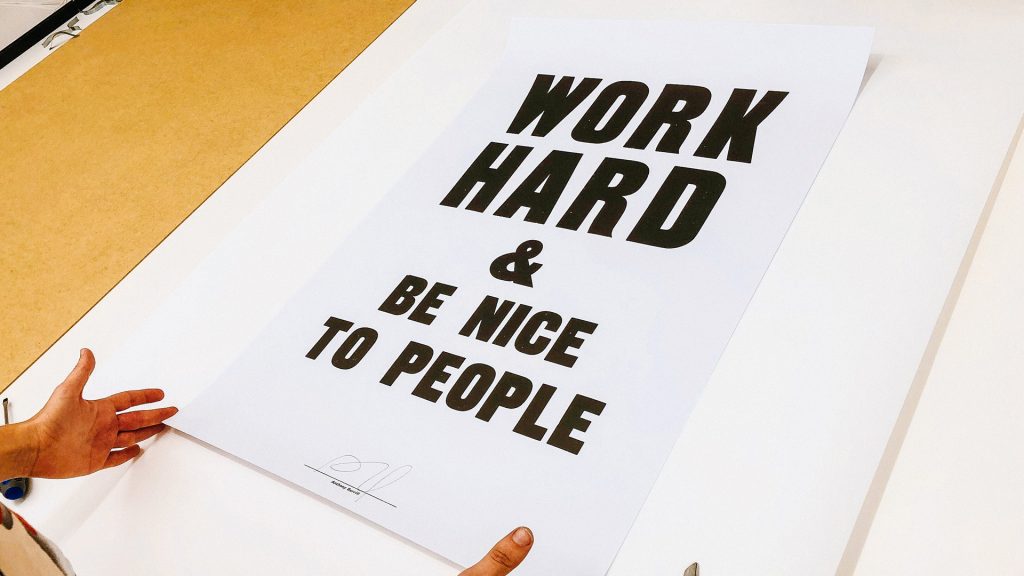
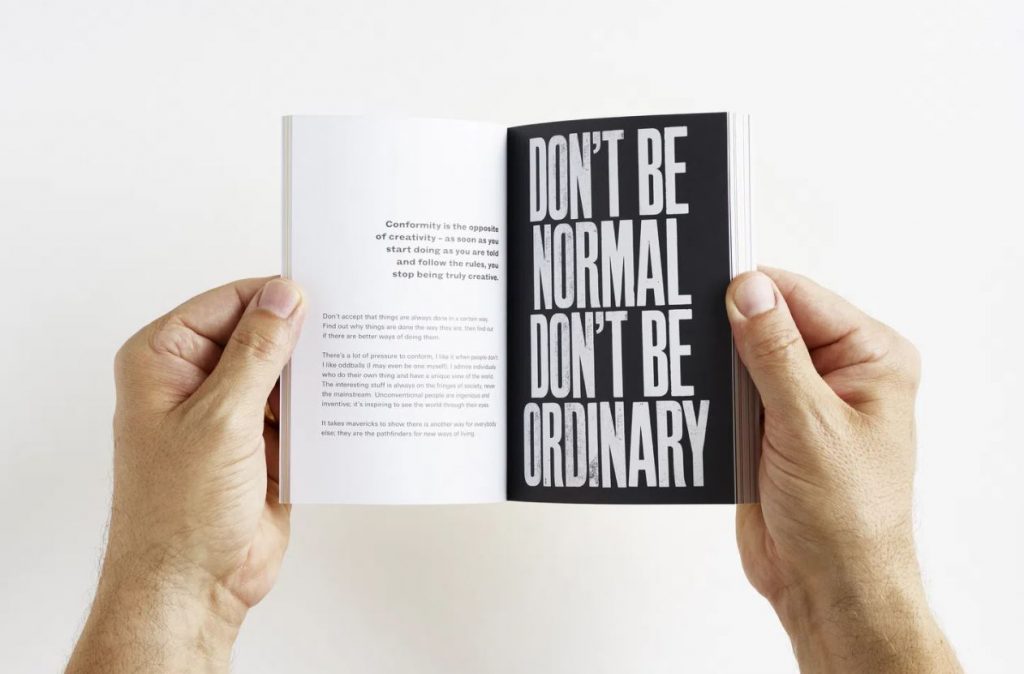













With his style in mind I decided to create my own print based on Betsy’s question:

I wanted to include the environment it was referring to and its link to the outside so cut out the letters and ventured back into the garden.
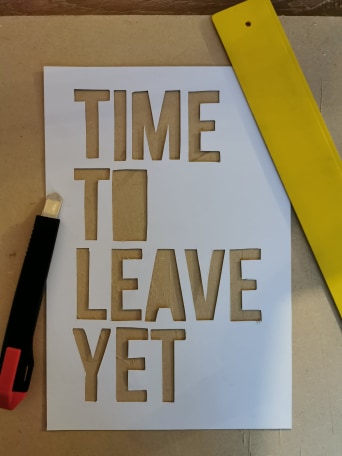
The Final Piece

As Sam Winston said in the lecture this week, you don’t have to draw a dog looking for a ball just because the text says it. I have applied this to my final piece. Not choosing one word in particular but using a question which evokes a feeling. I suppose if I had to associate a word with it I would choose “entrapment”.
I have used both a boxy font and the constraints of a white box to mirror the limitations we have felt as part of our isolation. I chose this particular image over the rest as I liked the homo-phonic nature of the word “leave” and “leaf” which frames the picture.
Personal Reflection
I really enjoyed this week and feel that it changed the way I think for the better. I had no idea what my outcome was going to be this week and trusted that I would come up with something interesting. I even had to manipulate the brief to my current situation!
My first step was to enter the environment I wanted to convey. In this case – my garden. I stopped, listened, looked and felt what it was like to be there. By taking down my notes in the form of a written paragraph I was able to entice a question from my findings – Is it time to leave yet?
I haven’t felt creative block so far on the course and I think the processes that we are learning are putting in place procedures which stop this from happening. Even if it did happen, I would be reaching for my Anthony Burrill book or my Brian Eno cards.
When in my garden I felt very much in nature and wanted to include this element in my final design. Overall, I am really pleased with how this week turned out and hope the meaning and messaging behind it is perceivable by everyone.
We are now only 4 days away from exiting isolation and I can not wait for the moment Betsy asks me is it time to leave yet? and I can say YES!
References
McAlhone, B., Stuart, D., Quinton, G., Asbury, N. (2016) A Smile in the Mind; Witty Thinking in Graphic Design (Links to an external site.). London: Phaidon.
Kenya Hara. 2017. ‘Ex-formation’. Available at: https://www.ndc.co.jp/hara/en/books/2018/07/ex-formation.html [Accesses 20/01/21]
A Practice For Everyday Life. Website. Available at: https://apracticeforeverydaylife.com/projects/ [Accessed 20/01/21]
Anthony Burril. Book. ‘Work Hard and be Nice to People’. Also available at: https://anthonyburrill.com/ [Accessed 20/01/21]



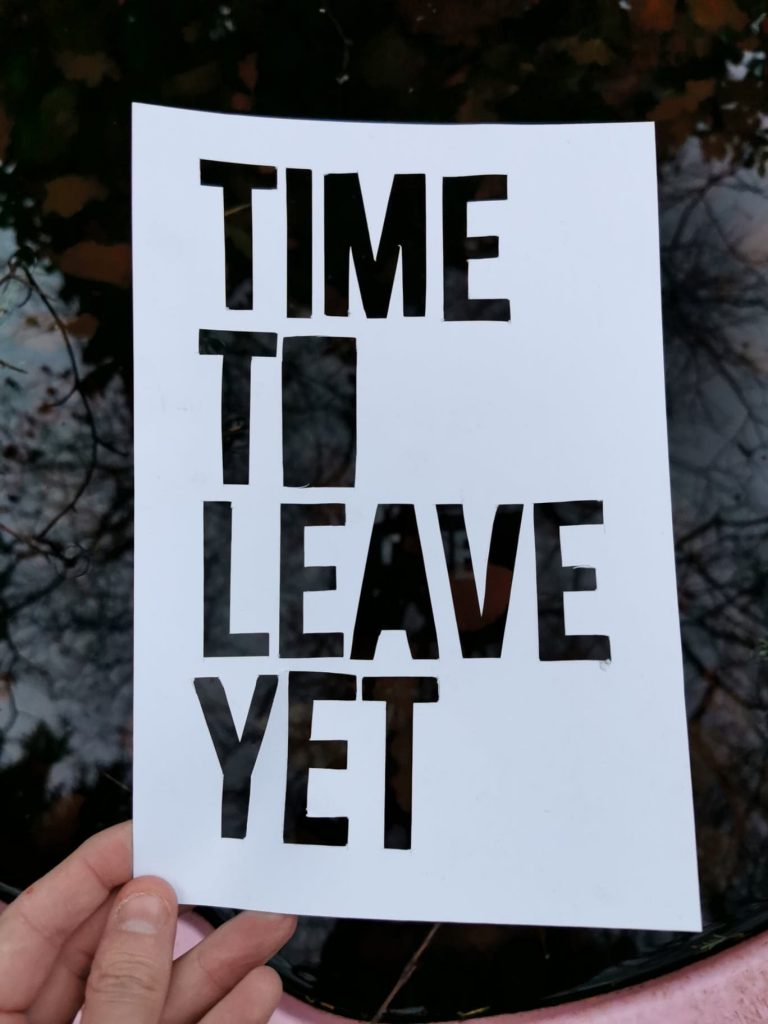

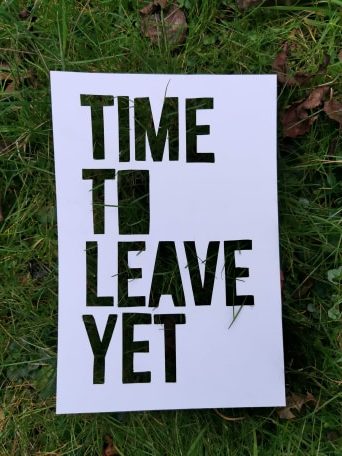
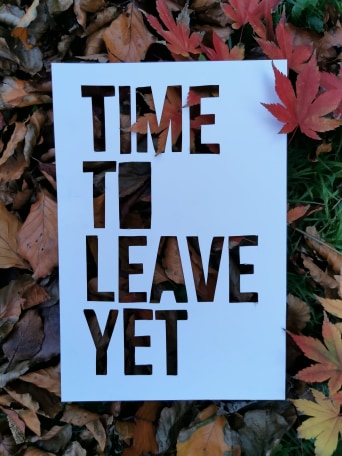
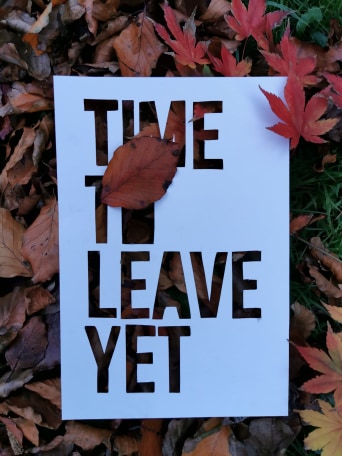

Leave a Reply